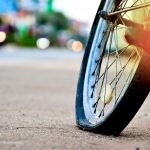How To Find The Best Tire Pressure For Your Bicycle
April 3, 2023 9:58 pm Leave your thoughts How To Find The Best Tire Pressure For Your Bicycle
How To Find The Best Tire Pressure For Your Bicycle
Tire pressure is one of the most important factors in determining your bike’s performance. It affects rolling resistance, comfort, traction, and puncture protection. Finding the best tire pressure for your bike can be tricky, however. It takes a balance between maximizing traction and comfort without sacrificing handling and efficiency.
Variables
Your bicycle tire pressure affects the overall feel and performance of your bike. It will also affect things like grip, rolling resistance, comfort, and puncture protection. For instance, high tire pressure can reduce rolling resistance and provide more traction on rough terrain. However, it can also make the bike feel a little more unstable. You should always use a quality gauge when checking the pressure of your tires. This will give you an accurate reading and prevent you from over- or under-inflating your bicycle tires. You should also be aware that your bicycle wheel and frame will have an effect on your bicycle tire pressure. Larger wheels require more air than smaller ones.
Tire Compression
The best tire pressure for your bike is the one that balances rolling resistance, comfort and puncture protection, while also offering predictability when handling. The ideal pressure depends on a few factors, but if you follow the general rules below, you should be able to find a sweet spot. Tires naturally lose air through permeation, where air escapes from the solid rubber sidewall at a rate of roughly 1-2 psi every month. Altitude and season changes can also affect your tyre pressure, so check it often. All tires have a maximum pressure recommended by the manufacturer, typically marked on their sidewalls or rims. It is important to stick to these recommendations as they are intended for safe operation only.
Temperature & Terrain
The temperature of the air inside the tires also plays a part. If it is cold outside, the tires will lose a lot of air pressure. On a smooth surface like tarmac, the best tire pressure is usually 100 psi. But if your ride is going to involve rough roads, it can be useful to reduce the pressure slightly. This will increase the cushioning in the tire and allow it to grip better on bumpy surfaces. However, the lower the pressure, the higher the rolling resistance, so it is essential to maintain a comfortable riding speed.
Weight
Generally, you can find the psi value for your tires on their sidewall. You can then adjust the pressure based on your weight and the riding conditions. The more you weigh, the higher your tire pressure should be. A 165-pound rider should use around 100 psi, while a 200-pound rider should be closer to 120 psi. Finding the perfect pressure for your bike can take some trial and error. Different terrains and riding conditions require different psi levels, so it’s important to try out your preferred psi before you set out on a ride.
Categorised in: Bicycle Maintenance, Bike Parts, Bike Safety
This post was written by admin

 How To Find The Best Tire Pressure For Your Bicycle
How To Find The Best Tire Pressure For Your Bicycle